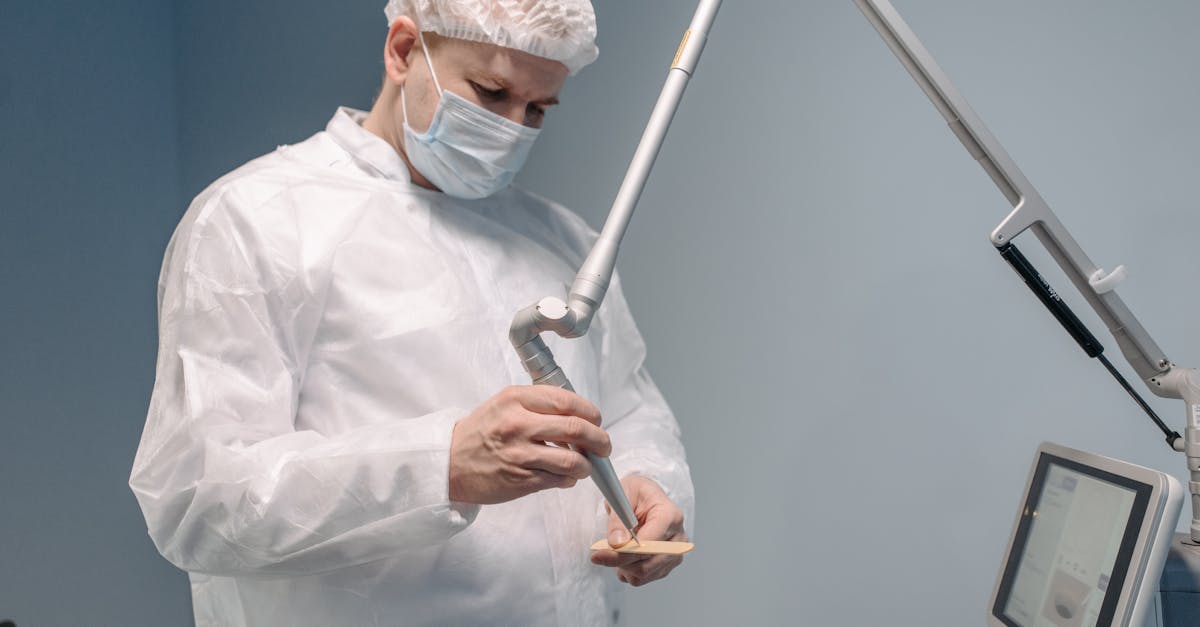THE new laser technologies have revolutionized the field of ophthalmology, providing more precise and less invasive treatment methods for various ocular pathologies. Thanks to advances such as femtosecond laser, surgeries cataract and of glaucoma become more effective, reducing associated risks and improving patient outcomes. These innovations also make it possible to treat retinal conditions with unprecedented precision, making previous treatments obsolete. The integration of these technologies into medical practices therefore has a significant impact on the diagnosis and management of eye diseases.

With technological advances, the field ofophthalmology has experienced a real revolution, notably thanks to new treatments based on lasers. Lasers have become essential tools for the correction of various eye pathologies, transforming the way ophthalmologists approach the diagnosis and treatment of eye conditions. The Internet and fundamental research have made it possible to discover new properties of lasers which are now used in the clinic to improve patients’ vision.
Lasers in ophthalmology are not limited to a simple method of visual correction. They also help treat diseases such as cataract and the glaucoma, playing a key role in preventing vision loss and preserving eye health. Lasers, such as the femtosecond laser, have demonstrated remarkable effectiveness and increased precision, reducing the risk of complications during procedures. This type of laser makes it possible to perform certain stages of cataract surgery in an automated manner, thus optimizing results for patients.
There cataract surgery has undergone a significant transformation thanks to new technologies. Previously, this procedure was invasive and could carry various risks. Today, with the introduction of the femtosecond laser, doctors can make precise incisions and evacuate the clouded lens with increased safety. Laser-assisted surgery also helps reduce post-operative recovery time, providing patients with improved visual results in a shorter period of time. Recent innovations in this area have led to a reduction in post-operative complications, representing considerable progress in eye care.
In addition, the treatment of retinal diseases has also benefited from technological advances in lasers. Lasers can proactively treat retinal abnormalities, minimizing the risk of vision loss due to conditions such as macular degeneration or the retinal detachment. Studies show that these laser treatments are effective in stabilizing vision and, in some cases, even improving patients’ visual perception. Modern techniques, such as laser panphotocoagulation, have enhanced the ability of specialists to treat serious eye problems with a much higher rate of success than traditional methods.
In terms of glaucomafor dermatological problems have emerged, helping to transform the landscape of dermatological care. In dermatology, lasers can target overactive sebaceous glands, which is particularly beneficial for people with persistent acne. You can learn more about these advances by consulting specialized articles, such as those available at this site.
In short, recent innovations in laser treatment offer new perspectives in the field of ophthalmology. Their impact is palpable, both on treatment methodologies and patient outcomes. The integration of lasers into clinical practices opens new avenues for the treatment of eye conditions, while minimizing the risks associated with traditional surgical procedures. It is interesting to note that the field of MedTech , or the technological revolution in healthcare, continues to shape the future of eye care and other medical specialties. More details on this revolution are available at this link .In a constantly evolving context, the future of ophthalmological treatments will surely be marked by continued innovations in laser technologies. As further research and development is carried out in this area, patients can expect even safer and more effective interventions, offering them the prospect of an improved quality of life through better vision.Discover laser technology, a revolutionary innovation that is transforming diverse sectors such as medicine, industry and communications. learn how lasers improve process efficiency and precision while opening new possibilities in research and development. explore the fascinating applications and advances of this essential technology.
Technological advances in the field of
lasers have profoundly changed the treatment landscape in ophthalmology . These innovations enable more precise, secure and efficient interventions, affecting various fields such as surgery of thecataract
, the treatment of glaucomaand retinal pathologies. The use of these laser devices offers new perspectives for improving the eye health of patients. The benefits of lasers in cataract surgeryCataract surgery has undergone a notable transformation with the introduction of
femtosecond lasers

Laser and glaucoma The treatment of glaucoma by laser represents a significant advance. Lasers help reduce intraocular pressure, an essential condition for preventing vision deterioration. Procedures such astrabeculoplasty laser remodels the iridocorneal angle, thus facilitating the circulation of aqueous humor. These techniques are effective and minimize the side effects that can occur with long-term drug treatments.Applications of lasers in medical retina Laser therapy is also proving crucial in the treatment of retinal diseases. THE retina lasers
intervene mainly to prevent vision deterioration in conditions such as
diabetes retinopathy or themacular exudation
. By acting precisely on abnormal blood vessels, these treatments promote the stabilization of visual acuity. This approach is essential to avoid long-term complications, thus allowing patients to maintain their visual autonomy.
Innovation and safety of laser treatments New generations of lasers, such as femtosecond laser , are designed to reduce potential harmful effects. Once the adjustments have been made, these devices have virtually no visible after-effects and are very easy to use. It is crucial to ensure that healthcare professionals are adequately trained to ensure optimal and safe use of these technologies. The experience and competence of practitioners play a key role in the effectiveness of the treatments administered. Laser Risk Considerations
Despite significant progress,
risks associated with the use of lasers should not be neglected. Potential complications include side effects such as redoubled with pain , there photophobiaor theblurred vision
. It is imperative to perform a careful evaluation of patients before considering laser intervention. Open communication between practitioner and patient is essential to discuss potential benefits and risks, build trust, and ensure compliance with safety protocols.








